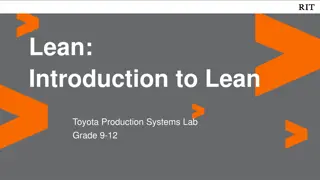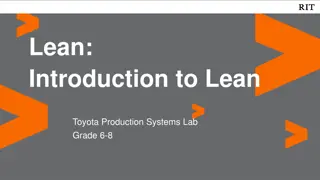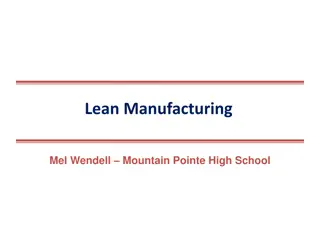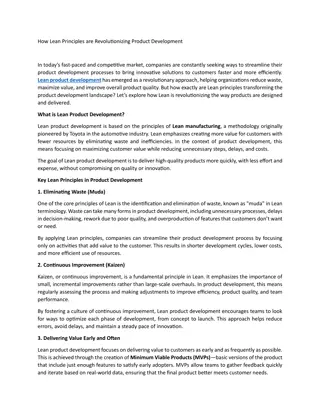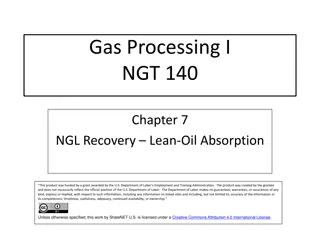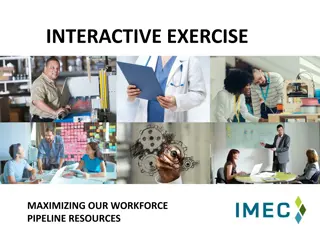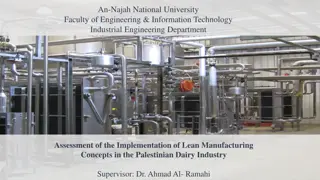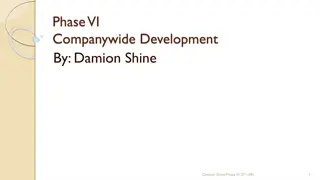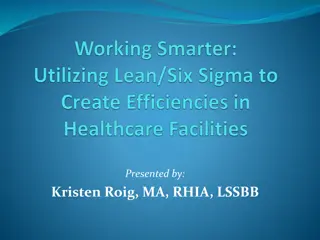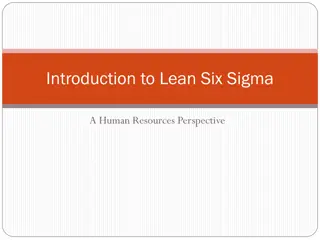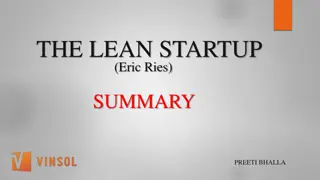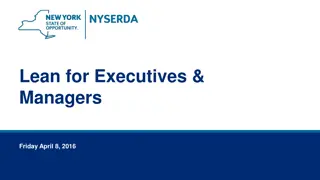Transforming Healthcare Through Lean Principles
Lean manufacturing principles, derived from the Toyota Production System, are being implemented in the healthcare industry to improve patient care, reduce errors, cut costs, and enhance overall efficiency. By identifying and eliminating waste, healthcare organizations can streamline processes, improve workflow, and deliver more personalized care to patients, resulting in better outcomes and increased staff morale.
Download Presentation

Please find below an Image/Link to download the presentation.
The content on the website is provided AS IS for your information and personal use only. It may not be sold, licensed, or shared on other websites without obtaining consent from the author.If you encounter any issues during the download, it is possible that the publisher has removed the file from their server.
You are allowed to download the files provided on this website for personal or commercial use, subject to the condition that they are used lawfully. All files are the property of their respective owners.
The content on the website is provided AS IS for your information and personal use only. It may not be sold, licensed, or shared on other websites without obtaining consent from the author.
E N D
Presentation Transcript
Do the job you were hired for to the best of your ability Improve the way your job is being done
Lean production preserving value with less work. Lean manufacturing is a management philosophy derived mostly from the Toyota Production System (TPS) and identified as "Lean" only in the 1990s. Lean manufacturing production, often simply, "Lean manufacturing, lean enterprise lean enterprise, or lean Lean," is centered on lean
Then in the 1930s, and more intensely just after World War II, Toyoda, Taiichi Ohno, and others at Toyota looked at their situation and Ford s concepts. It occurred to them that a series of simple innovations might make it more possible to provide both continuous process flow and a wide variety in products. From that they invented the Toyota Production System (TPS).
Why implement lean into the healthcare industry 20,000 incorrect drug prescriptions per year in the US 500 incorrect surgical operations per week 50 new born babies dropped at birth per day Enormous defect rate Cost escalation 60%-80% of costs can be reduced Work and patient flow will improve Patient as well as non-patient care processes will improve Improves morale, productivity and bottom line
The endless transformation of waste into value from the customer s perspective . Lean is not about working harder or faster, it is about finding waste and transforming it into value our customers want. One of the important aspects of Lean Healthcare is the focus on service-level improvements. Lean is about empowering employees to make decisions.
Exactly what the patient needs, defect free. One by one, customized to each individual patient. On demand, exactly as requested Immediate response to problems or changes. No Waste Safe for patients, staff and clinicians: Physically, Emotionally, & Professionally
Managers Direct Blame people Guard information Volume lowers cost Internal focus Expert driven Rewards: individual Function alone Managers Teach Root cause analysis Share information Removing waste lowers cost Customer focus Process driven Rewards: groups Function as teams Traditional Culture Lean Culture
5 5- -S S is the name of a workplace organization method that uses a list of five Japanese words. The list describes how to organize a work space for efficiency and effectiveness by identifying and storing the items used, maintaining the area and items, and sustaining the new order. Sort Set in order Shine Standardize Sustain Sort Set in order Shine Standardize Sustain
The 5 Whys to explore the cause-and-effect relationships underlying a particular problem. The primary goal of the technique is to determine the root cause of a defect or problem. Asking why 5 times is often useful in deterring the root cause. There is nothing magic about the number 5, just continue to ask why until you find a root cause of a problem. A key phrase to keep in mind in any 5 Why exercise is "people do not fail, processes do". 5 Whys is a question-asking technique used
The cycle used for continuous improvement: P PLAN LAN: Set targets/goals and plan how to get there D DO O: train, learn and implement solutions C CHECK HECK: Check the effects of what you ve done A ACT all over again. CT: take action on what you ve found .then do it
is the process of tracking a product/item/person throughout the production cycle through every process, to finished product. It also helps companies see where the process is being slowed down and allows teams to come up with goals to eliminate the cause of the slowdown. It pinpoints the bottom line and enables it to improve techniques that otherwise would be hard to visualize.
Transporting Overproduction Motion Defects/Rework Waiting Inventory Processing problems/unclear Under utilized people
There are four purposes of improvement: easier, better, faster and cheaper. These four goals appear in the order of priority. Shigeo Shingo
Who Moved My Cheese 13 minutes Watch Video Now



